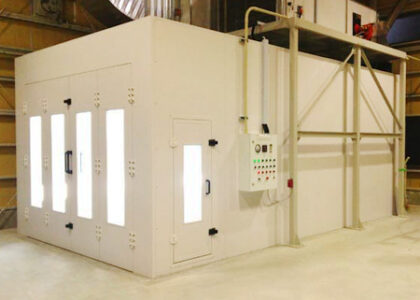Allergy Treatment Market: Drivers and Restraints
Globally, increasing patient population with various type of allergies, changing life style and environment pollution is increasing, which drives the global allergy treatment market. Increasing number of patients with various allergies such as skin allergy, eye allergy, Rhinitis, asthma, etc., changes in dietary habits, rising demand for advanced therapy for allergy treatment, increasing research and development activities, government initiative, are some of the factors that drive the growth of the global allergy treatment market. However, high cost of immunotherapy for allergy treatment and side effects from immunotherapy act as a restraint in the global allergy treatment market.
An allergy is a heightened sensitivity of immune system. Allergy occurs when a foreign substance which is harmless in nature reacts with immune system. These foreign substances are called allergens. Some of the allergens that affect the immune system are dust mite, animal dander, cockroach, pollens and mold. Dust mite, animal dander and mold can cause indoor allergy problems.
Allergy can be of various types such as eye allergy, Rhinitis, asthma, skin allergy, etc. According to the World Allergy Organization, approximately 30-40% of the world population was affected by allergic condition in 2011. Severe allergy can be life threatening in some patients as allergy severity reduces the function of organs such as allergic asthma causes the poor lungs function.
Request a Sample:
https://www.futuremarketinsights.com/reports/sample/rep-gb-1342
Allergy Treatment Market: Overview
Allergic diseases occur due to hypersensitivity of the immune system towards environment that usually causes minute problems in most individuals. These allergic diseases includes food allergy, allergic asthma, hay fever, atopic dermatitis and anaphylaxis. Symptoms for these allergic diseases are runny nose, an itchy rash, shortness of breath, red eyes, swelling and some more.
Such allergies are treated by avoiding known allergens, immunotherapy and by the use of medications such as antihistamines and steroids. In industrialized countries, allergic diseases are more common as compared to the countries that are more agricultural or traditional and it is noticed that there is a lower rate of allergic disease in rural populations versus urban populations.
Allergy Treatment Market: Region- wise Outlook
Depending on geographic regions, global allergy treatment market is segmented into seven key regions: North America, South America, Eastern Europe, Western Europe, Asia Pacific, Japan and Middle East & Africa. North America followed by Europedominates the global allergy treatment market due to increasing number of patients with various type of allergies including respiratory allergy, skin allergy, eye allergy, etc.
growing environmental pollution, developed healthcare infrastructure and growing demand for immunotherapy for treatment of allergies in these region. Asia-Pacific is the fastest emerging market for global allergy treatment due to growing allergic patient population, increasing awareness about advanced immunotherapy for treatment of allergies available in the market, developing healthcare infrastructure and rising government spending in healthcare industry in this region.
Allergy Treatment Market: Key Players
Some of the key market players in global allergy treatment market are Allergy therapeutics, Allergopharma, Allergon AB, Alerpharma S.A, Allergan, Inc., Genentech Inc., Schering-Plough Corporation, McNeil Consumer Healthcare, Collegium Pharmaceutical, Inc., Meda Pharmaceuticals, Inc, Sepracor, Inc. and Vicks.
Currently, the companies which operate in allergy treatment, are entering into mergers and acquisition with other companies to expand its allergy treatment business. For instance, in June 2015, Allergy Therapeutics acquired Alerpharma S.A, a Spanish company develops and now offers allergy immunotherapy products and services to expand its allergy immunotherapy business.
In addition, In November 2015, Pfizer Inc., a multinational pharmaceutical corporation entered into a merger with Allergan PLC, a pharmaceutical company to capture more market share in the drug industry.
The research report presents a comprehensive assessment of the market and contains thoughtful insights, facts, historical data, and statistically supported and industry-validated market data. It also contains projections using a suitable set of assumptions and methodologies. The research report provides analysis and information according to categories such as market segments, geographies, type of product and applications.
Ask for Customization:
https://www.futuremarketinsights.com/customization-available/rep-gb-1342
The report covers exhaustive analysis on
- Market Segments
- Market Dynamics
- Market Size
- Supply & Demand
- Current Trends/Issues/Challenges
- Competition & Companies involved
- Technology
- Value Chain
Regional analysis includes
- North America (U.S., Canada)
- Latin America (Mexico. Brazil)
- Western Europe (Germany, Italy, France, U.K, Spain, Nordic countries, Belgium, Netherlands)
- Eastern Europe (Poland, Russia)
- Asia Pacific (China, India, ASEAN, Australia & New Zealand)
- Japan
- Middle East and Africa (GCC, S. Africa, N. Africa)
The report is a compilation of first-hand information, qualitative and quantitative assessment by industry analysts, inputs from industry experts and industry participants across the value chain. The report provides in-depth analysis of parent market trends, macro-economic indicators and governing factors along with market attractiveness as per segments. The report also maps the qualitative impact of various market factors on market segments and geographies.
Get In Touch With Our Team For 20% Flat Discount:
https://www.futuremarketinsights.com/reports/brochure/rep-gb-1342
Allergy Treatment Market: Segmentation
Global allergy treatment market is further segmented into following types:
- By Allergy Type
- Eye allergy
- Rhinitis
- Asthma
- Skin allergy
- Other allergy
- By Allergy Treatment Type
- Anti-allergy medicine
- Antihistamines
- Corticosteroids
- Decongestants
- Mast cell stabilizers
- Other medicines (Leukotriene, Calcineurin, Cromoglicate, Anti-IgE)
- Immunotherapy
Global allergy treatment market is further segmented into End User
- Hospital
- Clinics
- Medical store
- Home use
- Others
About FMI:
Future Market Insights (ESOMAR certified market research organization and a member of Greater New York Chamber of Commerce) provides in-depth insights into governing factors elevating the demand in the market. It discloses opportunities that will favor the market growth in various segments on the basis of Source, Application, Sales Channel and End Use over the next 10-years.
Contact:
Unit No: 1602-006
Jumeirah Bay 2
Plot No: JLT-PH2-X2A
Jumeirah Lakes Towers
Dubai
United Arab Emirates
For Sales Enquiries: sales@futuremarketinsights.com
For Media Enquiries: press@futuremarketinsights.com
Website: https://www.futuremarketinsights.com
LinkedIn| Twitter| Blogs

